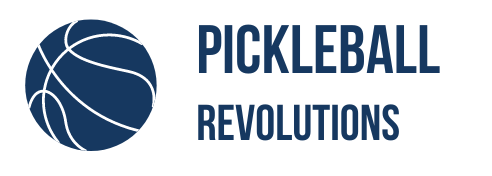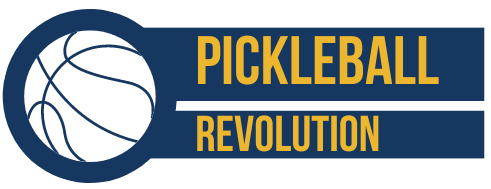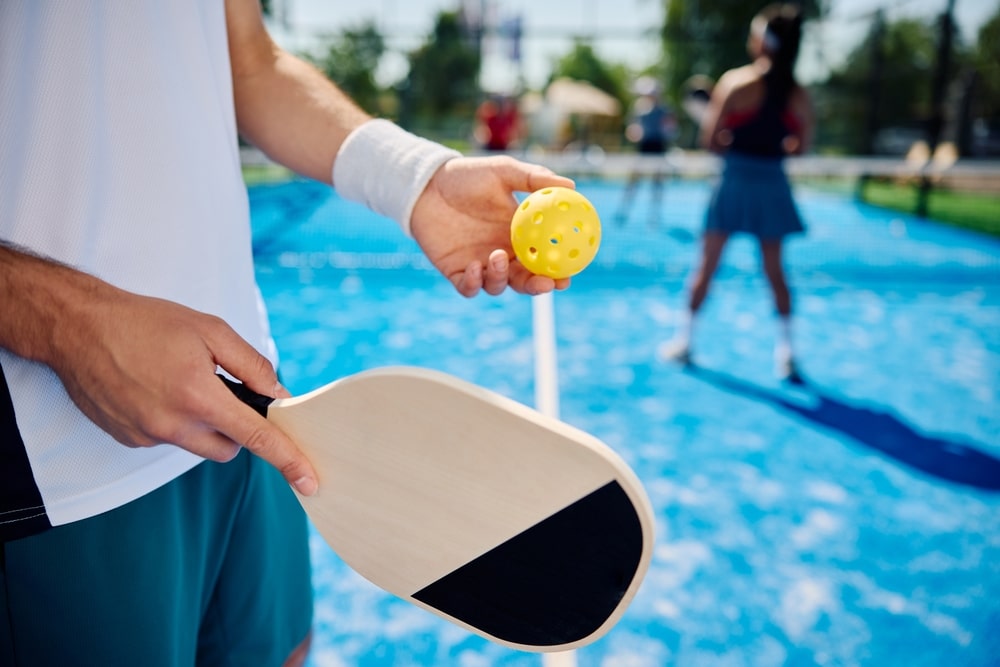Table of Contents
Imagine stepping onto the pickleball court, paddle in hand, feeling the rush of competition and the thrill of the game. Whether you’re a beginner mastering the basics, an intermediate player fine-tuning your strategy, or an advanced competitor dominating the net, understanding pickleball skill levels is the key to unlocking your full potential. But where do you stand? And how can you level up?
This guide will break down everything you need to know—from rating systems to essential skills—so you can confidently assess your abilities and take your game to the next level. Let’s dive in and discover how to elevate your pickleball prowess!
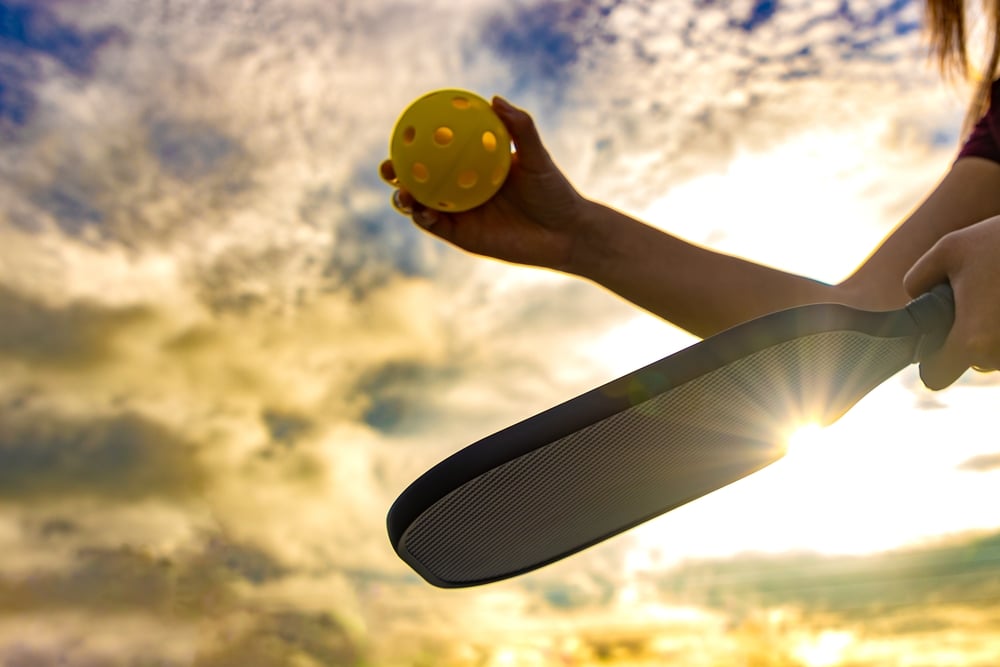
Pickleball Skill Levels
In the fast-paced world of pickleball, a player’s skill level is more than simply a marker; it’s an important way to gauge their ability and potential on the court. Each skill level indicates a player’s aptitude for navigating the game’s details, from the relaxing cadence of a dink rally to the calculated moves of tournament play. Pickleball continues to draw players of all ages and skill levels. Therefore, competitive participation and personal development must recognize and evaluate one’s own skill level. Exploring the subtleties of pickleball skill levels can help players at all skill levels understand the challenges and rewards that await them, whether they are just starting or aiming for mastery. Now that you have your paddle let’s explore the complex world of pickleball knowledge and determine how to get a pickleball rating.
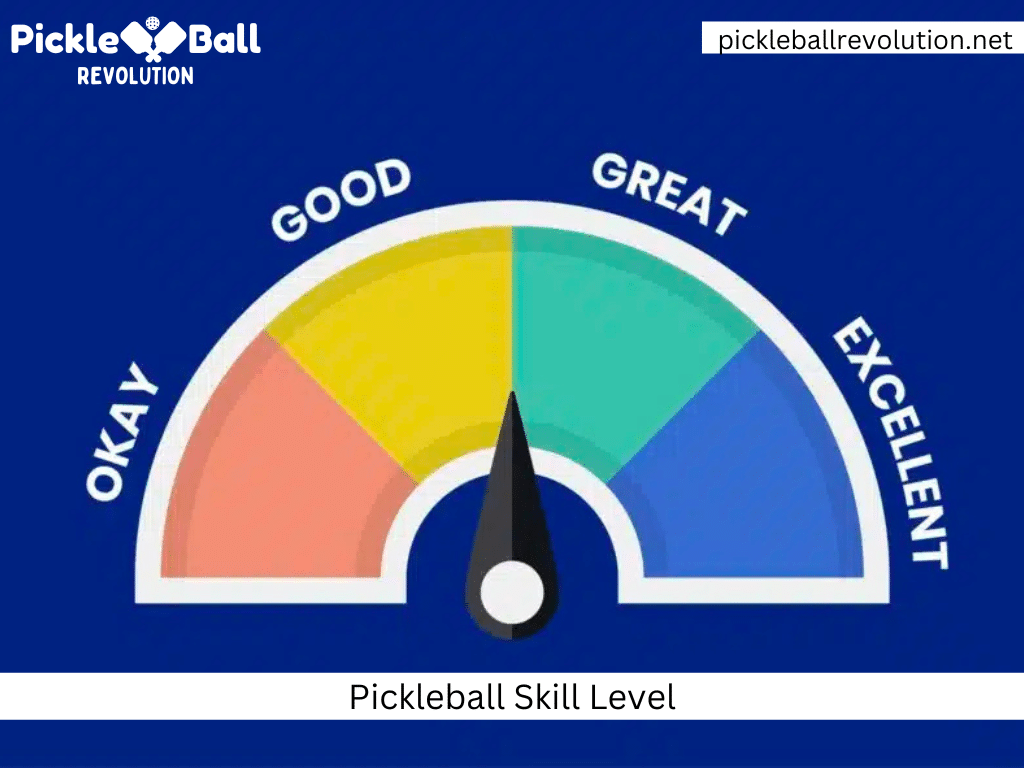
Determining Pickleball Skill Level
Now the question arises: How do you determine pickleball skill level?
Pickleball players’ skill levels are determined by various factors, including their athletic ability and strategic thinking. This evaluation is essential for players to comprehend their skill level and participate in appropriate competition.
Levels of Foundational Skill: 1.0 to 2.0
Beginners fall between skill levels 1.0 and 2.0. Although they are somewhat familiar with the game’s rules, their gameplay mainly focuses on foundational abilities and simple shot execution.
Advancement to Intermediate Stages: 2.5–3.5
Players exhibit enhanced court awareness, shot variety, and rally sustainability as they progress to the 2.5 to 3.5 skill levels. This evolution shows that the player better understands pickleball dynamics and can play at a medium tempo while making strategic shots.
Advanced Techniques Mastery: 4.0 to 4.5
Gamers with skill ratings between 4.0 and 4.5 demonstrate mastery of sophisticated tactics such as efficient teamwork, tactical placement, and accurate shot placement. They can predict their opponents’ movements, have good footwork, and collaborate well.
Superb Ability Levels: 5.0 and Above
When players reach skill levels 5.0 and higher, they demonstrate remarkable flexibility, effective footwork, and reliable advanced shot execution. These top players exhibit complete command of every facet of pickleball gameplay and frequently participate in competitive competitions.
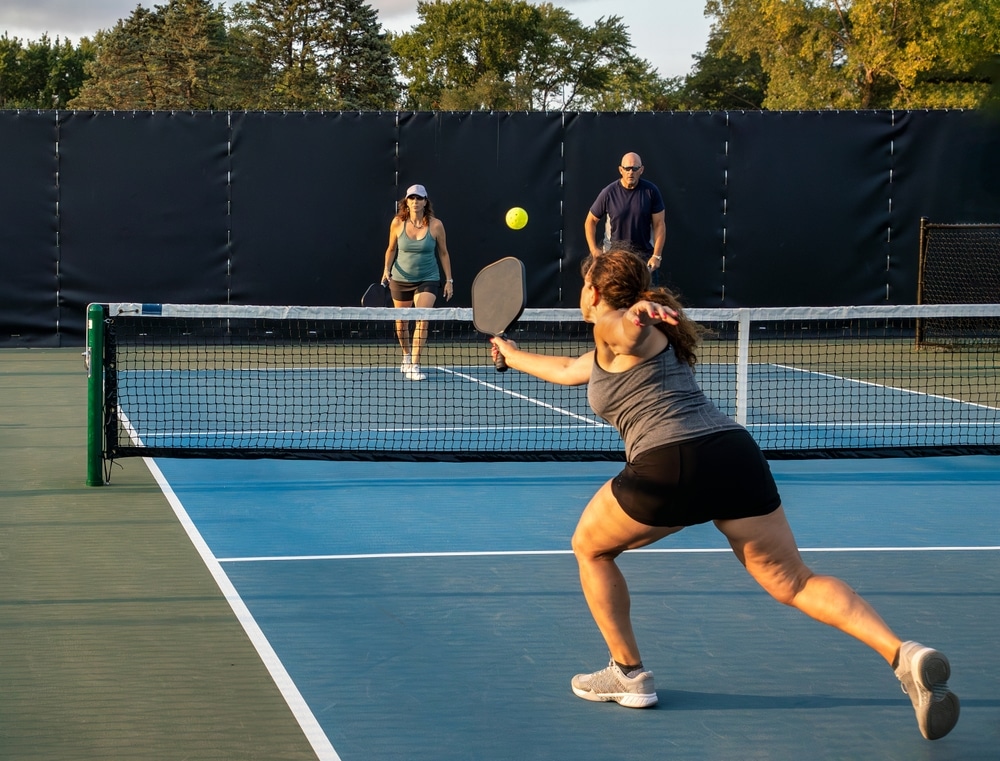
Significance of Determining Skill Level
Pickleball players must know their ability level to track their development, play in appropriate competitions, and establish reasonable goals. Skill ratings, whether self-administered or graded by groups such as USA Pickleball, offer a framework that allows players to monitor their progress and improve their gameplay.
Steps to Determine Pickleball Skill Levels
Get to Know Pickleball Skill Levels
Before evaluating your ability level, it’s important to comprehend the range of skill levels the community recognizes. These levels, which typically range from 1.0 to 5.0+, reflect different skill levels and experience in the sport. Higher numbers denote greater expertise and competency; each level has expectations and capabilities.
Use a Searchable Table or Similar Resource
If you’re having trouble figuring out how skilled you are, you might want to look into using a searchable table or pickleball skill level chart that was made to assist players in assessing their level of expertise. These tables let you compare your skills to those listed for each rating by frequently including descriptions and attributes linked to each skill level. You can skip this step if you think you fall into the lower skill levels (1.0 to 2.5). If, on the other hand, you consider yourself to be a 3.0 player or above, interacting with the searchable table can offer insightful information about your potential skill level.
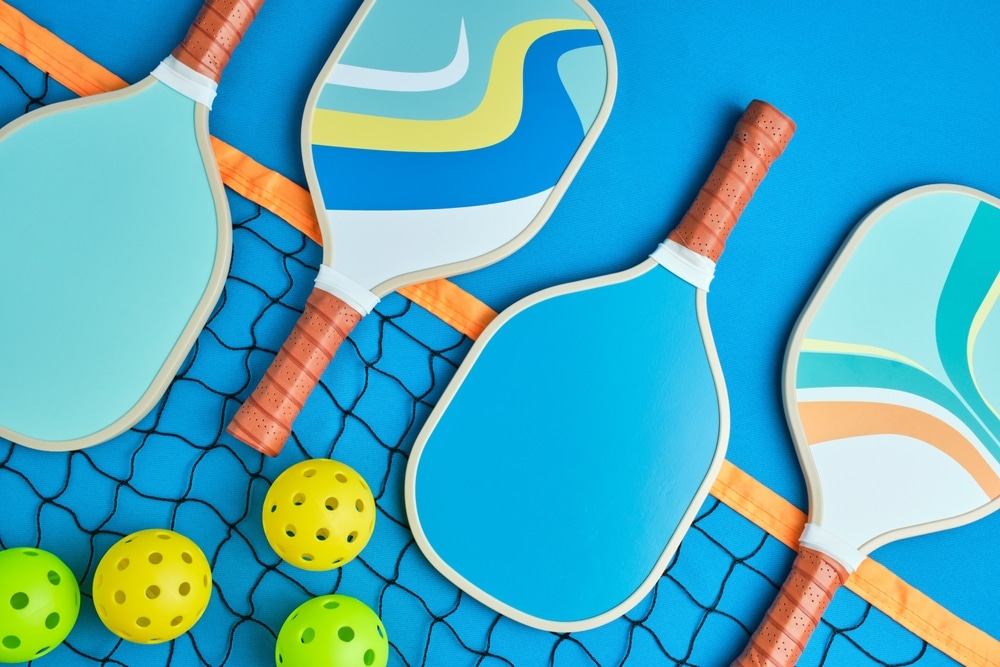
Self-Evaluation and Comparison for Pickleball Skill Levels
Give your pickleball skills and talents a sincere appraisal. Consider elements like accuracy, consistency, shot diversity, court positioning, and knowledge of soft game tactics. To find the skill level that most closely corresponds with your skills, compare your self-appraisal with the descriptions in the searchable table. Players frequently find themselves between two skill levels, so don’t panic if this happens to you.
Assess Your Proficiency Using USA Pickleball Guidelines
After determining a possible skill level using the searchable table or self-assessment, validating this evaluation using defined standards is critical. The national governing organization of pickleball, USA Pickleball, provides skill assessment papers with detailed requirements for every skill level. These requirements include many game-related topics, such as serves, serves returned, dinking, volleys, overheads, strategy, and more. You can determine whether your competency level corresponds with your identified rating by evaluating your talents against these standardized benchmarks.
Continuous Improvement and Reassessment
Like any sport, pickleball skill levels are dynamic and may change with time due to experience and practice. Always strive to get better at what you do, ask coaches or more seasoned players for advice, and push yourself against better opponents. By periodically reevaluating your skill level, you can ensure that it appropriately represents your present sporting talents and accomplishments.
Following these steps will help you estimate your pickleball skill level more accurately and confidently, using standardized criteria and your subjective self-evaluation. Knowing your skill level will help you locate appropriate opponents, maximize gaming enjoyment, and grow personally.
Ways to Find Your Pickleball Rating
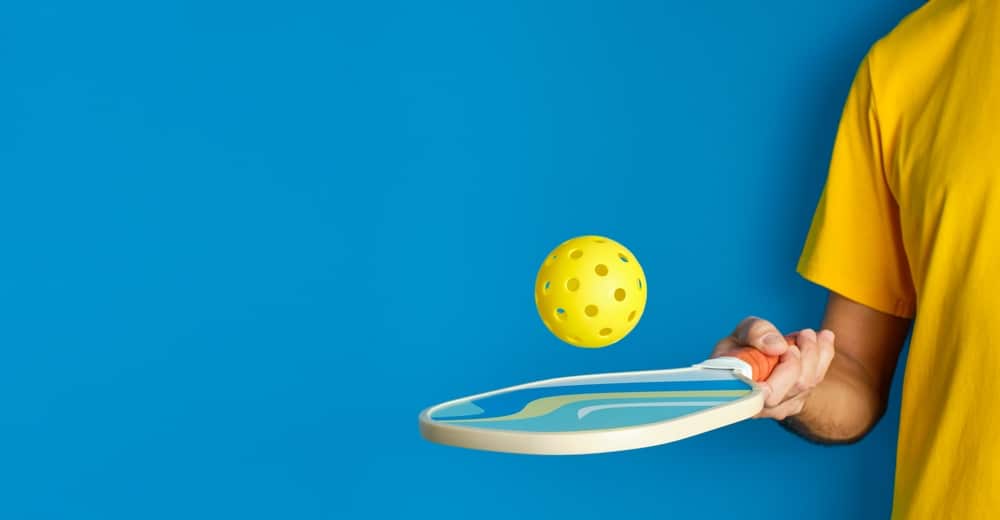
To determine your pickleball rating, you must evaluate your abilities using various grading systems, which provide a clear picture of your skill level.
Self-Rating
In this approach, you evaluate your abilities using standards set by groups such as USA Pickleball. Self-rating usually entails assessing your skill in various game areas, including dinks, volleys, serves, and strategy. The pickleball associations give skill assessment papers that you may use to help you with the process. For a self-evaluation to be accurate, you must be honest with yourself.
UTPR Rating Pickleball Skill Levels
The USA Pickleball Tournament Player Rating, or UTPR for short, is a system of player rankings based mostly on the outcomes of events sanctioned by USA Pickleball. Your rating is based on how well you do in various events, considering match results, opponents’ ratings, and the difficulty of the competition. UTPR provides a uniform rating representing your competitive performance in a tournament context.
DUPR Rating for Pickleball Skill Levels
Dynamic Universal Pickleball Rating, or DUPR for short, is a dynamic rating system that considers many factors, such as leisure play and competition performance. In contrast to UTPR, DUPR considers a wider variety of factors when determining your overall skill level. It uses ordinal ratings in several areas, including technique, consistency, shot selection, and court placement. Your rating is regularly updated by DUPR based on your performance, providing a more realistic picture of your present ability level.
You can play pickleball recreationally and in DUPR-recognized tournaments to find your pickleball rating, or you can participate in USA Pickleball-sanctioned tournaments to get a UTPR. Furthermore, self-rating can be used as a preliminary evaluation to see how good you are before playing competitively. Whichever approach you take, you may improve your comprehension of your pickleball rating by routinely assessing your performance and getting input from more seasoned players.
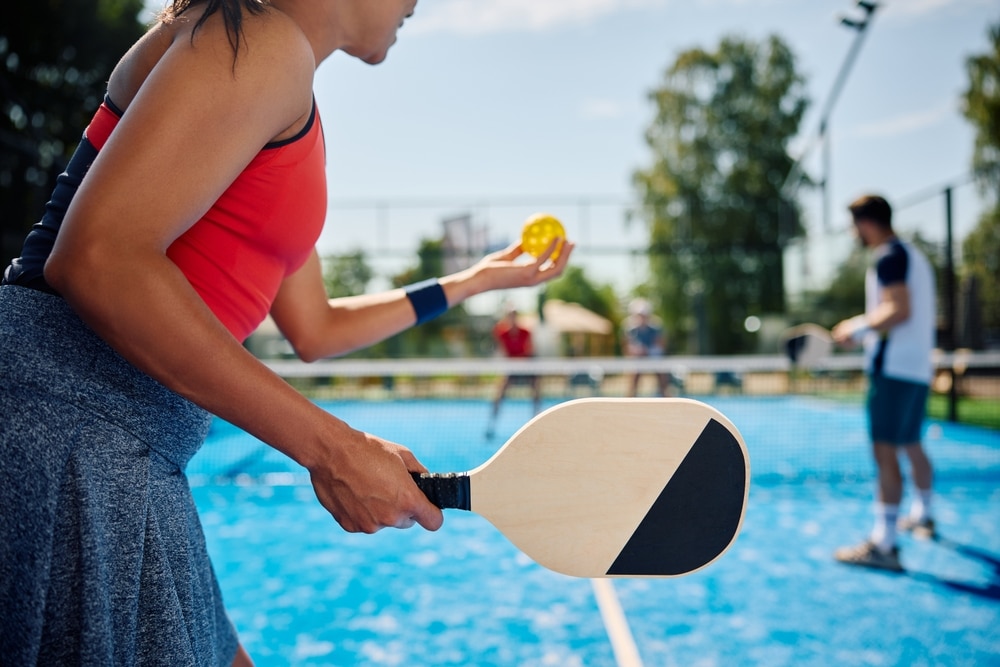
Levels for Pickleball Rating System
Players use the pickleball rating system, especially the one set forth by USA Pickleball, to evaluate and comprehend their skill levels.
Level 1.0: Beginner
This level is for players who are just getting started and learning the fundamentals of the game, such as how to handle the paddle, and basic game knowledge.
Level 1.5
Players at this level have made some progress, perhaps after completing at least one lesson, and they are focusing on improving their serving technique and understanding of scoring principles.
Level 2.0
This level is defined by smoothly navigating the court and reliably executing successful serves. Gamers begin to feel more assured of their skills.
Level 2.5
At this level, players start to grasp more complex rules, such as the two-bounce rule, and recognize gaming patterns.
Level 3.0
Beginner players are beginning to identify the various playing styles of their opponents and are improving their serves.
Level 3.5 Intermediate
Players at this level refine their serving tactics, sustain a short rally, and showcase their deep serving prowess.
Level 4.0 Intermediate-Advanced
At this level, players can use advanced serving and third shot techniques, maintain lengthy rallies, and show confidence while making fewer mistakes.
Level 4.5
Competent players utilize a high degree of strategy, spotting and taking advantage of their opponent’s flaws fast and committing few mistakes.
Level 5.0+ – Expert
These players have a great command of the game, committing few errors, having a profound awareness of subtleties, and demonstrating extraordinary talent in every facet of pickleball, such as dink rallies, court location, and taking advantage of opponents’ vulnerabilities.
Serving tactics, rally length, unforced errors, court location, recognizing opponents’ weaknesses, and proficiency with both forehand and backhand strokes are key ideas and terminology related to pickleball skill evaluation and ratings. Accurately determining player skill levels relies heavily on official rating systems like UTPR and tournament play.
Although more dynamic systems like DUPR may offer a more comprehensive evaluation, incorporating both tournament and recreational play, pickleball self-rating skill level tools offered by organizations like USA Pickleball offer accessible ways to gauge proficiency for players looking to understand and improve their skill levels.
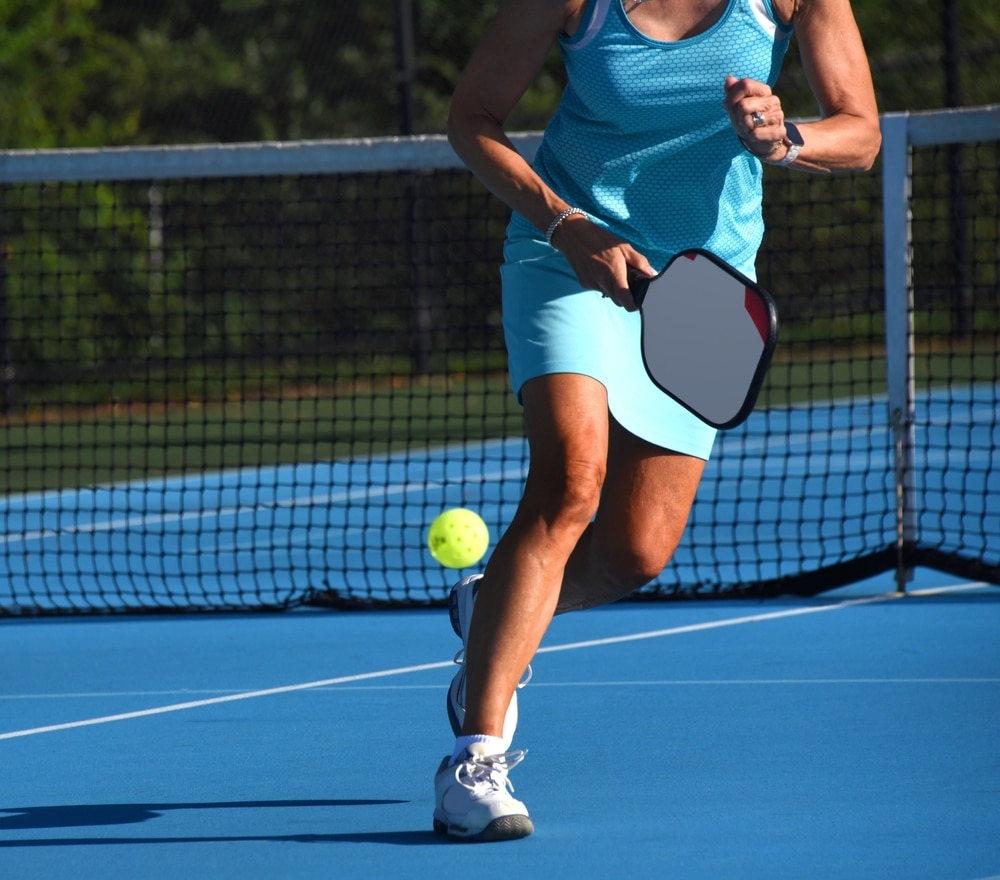
Final Thoughts
Their skill levels determine the pace at which players move in the rhythmic dance of pickleball. Every move, from the deft dink rally to the forceful serve return, indicates one’s level of pickleball proficiency. The skill with which players move around the court is refined during practice and competition, whether deliberately taking advantage of their opponent’s weaknesses or participating in medium-paced exchanges. The path to mastery is revealed in USA Pickleball’s UTPR rating system, which ranges from beginner to expert and assigns player ratings. Forehand and backhand strokes become second nature, court location becomes an art, and experience reduces unforced errors. Using the pickleball ranking system, players may assess their abilities and connect with other enthusiasts who share their love of this challenging yet thrilling activity.


